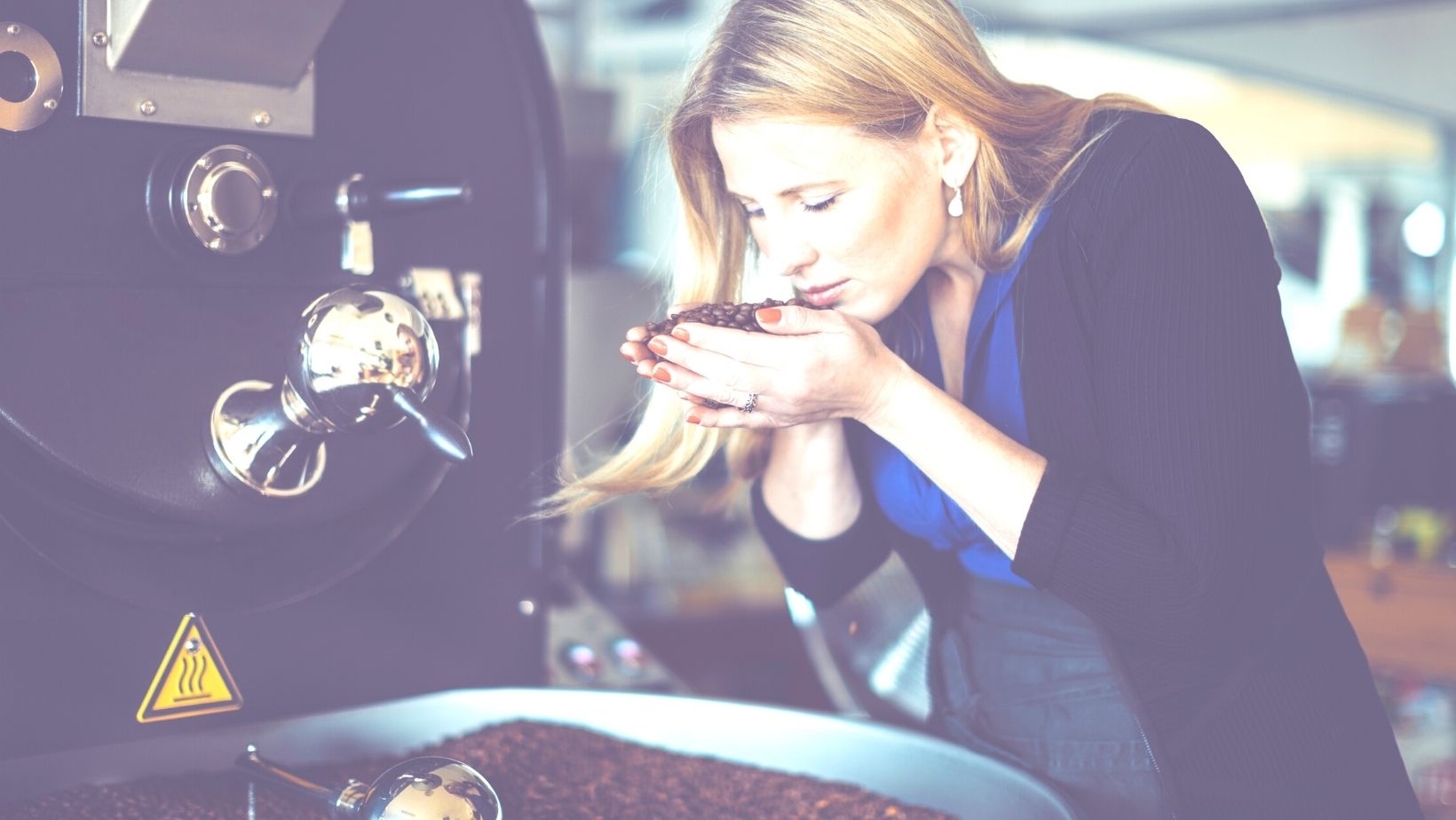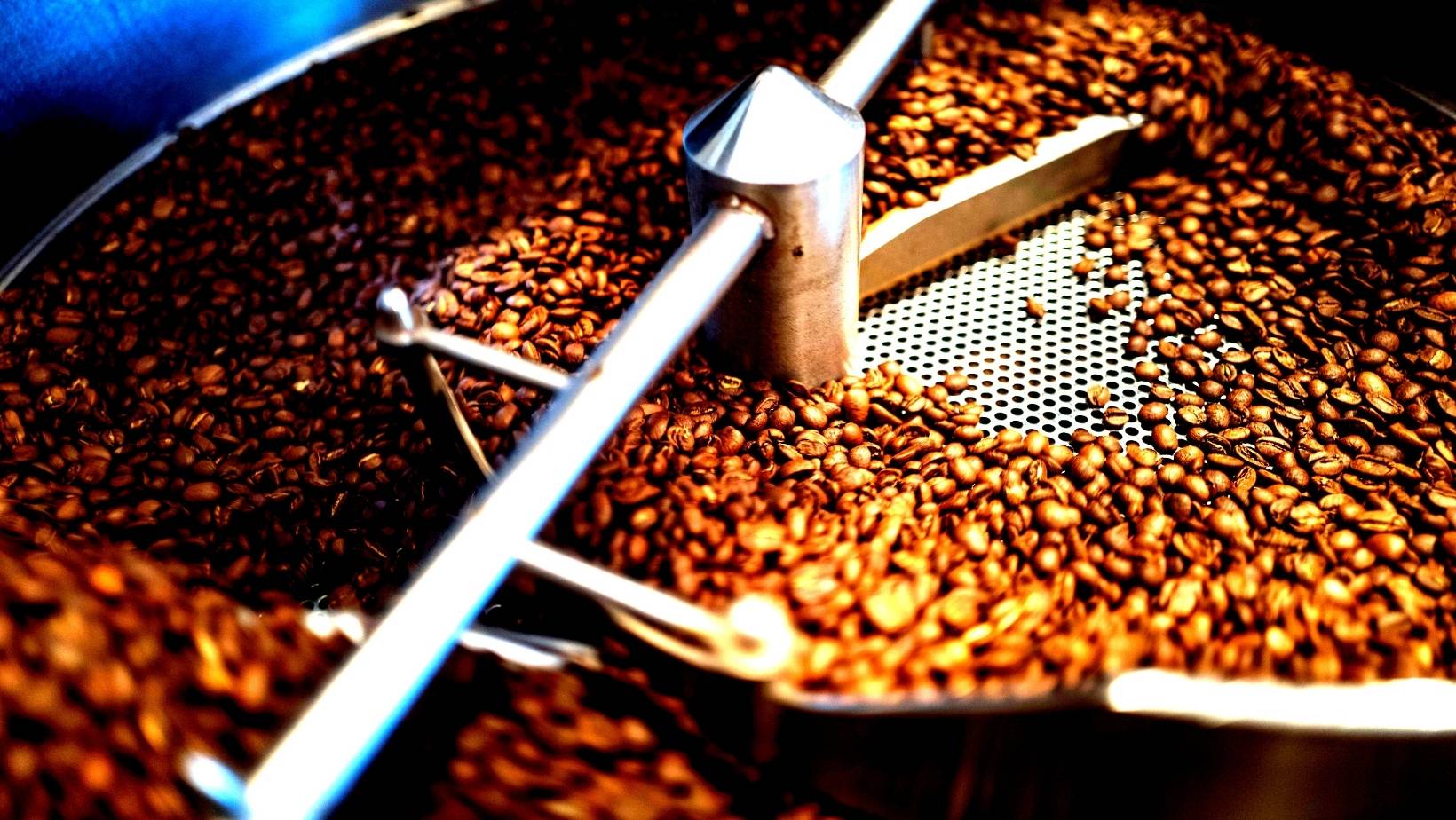
In coffee processing,, to get the desired coffee flavor, choosing the right type of coffee, it’s a job. Proper roasting of coffee is critical in creating the desired specific flavor. Maybe you already know the types of roasting and the problem of fast roasting or slow roast coffee beans, please follow this article to learn more about whether it makes any difference and some roasting techniques.
Fast coffee roasting and slow coffee roasting, what’s special?
Roasting coffee quickly or roasting coffee slowly is the norm for the time it takes for a passionate roaster to make a roast. The roasting time we refer to here is the time of the whole roasting process. If a batch of coffee is roasted for a short time, you will get the desired qualities in the coffee,, such as fruity, fruity, chocolatey, and nutty aromas.
However, it is necessary to avoid roasting too quickly, leading to burnt coffee due to excessive heating.In some cases, reasonably fast roasting will also help the roasted coffee beans better retain the flavor molecules. That helps your roasted coffee beans have not only many different scents but also more scents, making you feel better and more transparent.
The choice of degree of roasting depends mainly on the will or purpose of the roaster and producer and even on the quality of the green coffee. Quick roasting will help maximize the flavor qualities of the coffee. In some cases, quick coffee roasting is not good.
Characteristics of beans change when roasting coffee quickly and roasting coffee slowly..
For fast coffee roasting: When roasting at this level, the coffee beans reach the lightest roast, light brown color, according to SCAA standards, the color of this roasting threshold is numbered #95. This roast usually ends when the internal temperature of the coffee beans reaches 196 degrees Celsius. At this roasting threshold, the coffee is usually very acidic, strongly sour, weak flavor, sometimes with a taste of nuts or flavors green of the grass.
– For slow roasting coffee: At this roasting threshold, the brown color becomes darker, coded #55 according to SCAA standards. The roasting batch usually ends when the internal temperature of the coffee beans reaches the threshold of 215 to 225 degrees Celsius. At this roasting threshold, the coffee flavor will reach its highest intensity and the flavor properties of the coffee will be very rich.
Rich, the acidity is still quite strong, but becomes smoother and more balanced, the typical flavors of coffee are still quite clear. This is the favorite roasting threshold of people on the West Coast of the United States and is often the roasting threshold of special coffee lines.If you want to try the quality of each type of coffee, you should roast the coffee quickly, so that the natural flavor and flavor qualities of the roasted coffee beans are most clearly revealed.
When roasting coffee slowly, in addition to the remaining natural flavors, slow-roasted coffee beans will often have the common scent of roasted beans and burnt smell.Fast coffee roasting and slow coffee roasting – the factors that create emotions for every coffee drinker
In short, during the process from watering green to dark drying is a process in which reactions have taken place that we cannot see with our naked eyes. Over the years, roasters have gained valuable experience in order to create a cup of coffee that contains unique flavors, the factors that create it are time and temperature. The taste of each cup of coffee prepared after fast roasting and slow roasting is what the artisans want to convey to all diners. Hopefully, the article has helped you to clear some of the questions in your heart about the taste of each cup of coffee.
How to slow roast coffee beans: Is It Better To Roast Coffee Fast Or Slow?
In fact, as mentioned above, there is no one-size-fits-all method. It highly depends on the roaster the type of nuts you roast and your requirements for flavor.
Instead of going to guide you to a specific roasting recipe, you should understand the pros and cons of roasting and choose a suitable roasting method yourself.
Acidic Or Non-Acidic
Acidity is either loved or hated in places where coffee is grown, and the way you roast your coffee can have a big effect on how acidic it is. It’s not a trade secret that how long coffee is roasted affects how acidic it tastes.
It has been known for a long time that roasting coffee longer can reduce acidity, giving it a taste that is less sour and more bitter. On the other hand, your coffee will be more acidic if you roast it quickly.
When you roast something longer, the organic acids have more time to break down, so the acidity goes down. If there are more organic acids, the taste and acidity will be stronger.
Concentrated or less concentrated
The concentration of flavors in hand coffee is another way that roasting time affects how coffee tastes. The longer coffee is roasted, the bitterer it gets.
Coffees that are roasted quickly tend to have a stronger acidic flavor with a bit more bitterness, but the flavor is fuller overall. On the other hand, if you roast the coffee slowly, the acidity and bitterness will be less strong and the flavor will be less concentrated.
Control vs Efficiency
Since the coffee is being roasted at a faster rate, a quick roast is more efficient, but it gives you less control. On the other hand, this means that if there are certain organic compounds that you don’t like the taste of, you may need to choose a longer roast.
As the whole process takes longer, some of the coffee’s flavor notes will change, and you’ll get a better idea of how it all works.
Large roasting companies, on the other hand, may like the fast roasting process because it is quick and keeps the flavor consistent. And it will be harder to get things done quickly with baked goods.
Most coffee lovers would tell you not to use a quick roast if you are new to roasting coffee. Even though quick roasts are fast and consistent, they are notoriously hard to do because the beans are more likely to get burned.
Which kind of roaster do you have?
Your choice of roasting method can be made or broken by the type of roaster you have. Since the design has a big effect on the thermodynamics of roasting, you should pay close attention to how the machine is built and how it looks.
People who use a traditional drum roaster should slow roast much more than they should fast roast. This is because the beans will burn in traditional drum roasters if the heat is too high.
You should use a quick roaster if you have a fluidized bed roaster. Since hot air is used to indirectly heat the beans, the fast roast, which is known for being hard to control, is now a lot easier to handle.These roasters can also make a lot of heat without burning the beans.
How to Roast Fast and Slow: The Art of Roasting
In an art form that is so delicate, the taste of coffee is at risk. Because there are so many different ways to roast coffee, the coffee tastes different when it is done quickly or slowly. In this part of the article, we’ll talk about the different ways to roast something quickly or slowly.
Before we move on, let’s talk about the first crack, which is an important part of roasting coffee. The first crack is one of the things you can see and hear when you roast coffee. This makes it an important way to track how far along the roasting process you are.
The first crack is easy for roasters to notice because it is bigger than the other chemical changes that happen. The first crack gets its name from the sound it makes when coffee is being roasted.

When roasting coffee, the first crack is an important sign, and the time it takes to get to the first crack varies a lot between slow and fast roasting.
During slow roasting, the coffee is heated at low temperatures until the first crack, which usually happens between 400°F (204°C) and 420°F (216°C). Turn down the heat after the first rub until the beans are done roasting.
In contrast to slow grilling, quick grilling starts with high heat, like when you grill a steak, and then switches to low heat when you hear the first crack. Once the beans have reached a high temperature, they can roast on their own.
Most of the time, a slow roast takes 14–20 minutes from start to finish. On the other hand, a quick roast is done in a very short amount of time, especially compared to a slow roast. Most of the time, the quick roast only takes 90 seconds, which is a huge 20-minute improvement.
Below is a table that makes it easy to tell the difference between slow roast and fast roast. We also added more information for you.
| Slow Roast | Fast Roast | |
| Taste | Less full-bodied, more controlled flavor. It is less acidic but typically more bitter. | Has a more concentrated, consistent flavor. Acidic but less bitter. |
| Speed | Takes 14 to 20 minutes from the start of roasting to the end of roasting. | Takes just 90 seconds throughout the whole period of roasting. |
| Degree of Control | Has more control of taste, easier not to burn. | Very easy to burn, provides a more consistent result. |
| Machine Type | Appropriate for Traditional Drum Roasters. | Easily achieved with Fluidized Bed Roasters. |
FAQ:
- Can You Roast Coffee Too Fast?
You can roast very quickly, but you should know that roasting quickly makes it harder to control. When you roast something too quickly, the taste isn’t even, like when you fry a frozen chicken breast, so the outside and inside don’t taste different.
Also, since roasting time affects acidity, you may find that the taste is very acidic. Make sure your coffee is properly roasted, that the beans are separated, and that the color is the same all the way through.
- Slow Roast Vs Fast Roast: Which Is Better?
- Should coffee be roasted slowly?
- How Long Should coffee beans be roasted?
- What temperature should I roast coffee beans at?
- How does roasting time affect coffee?